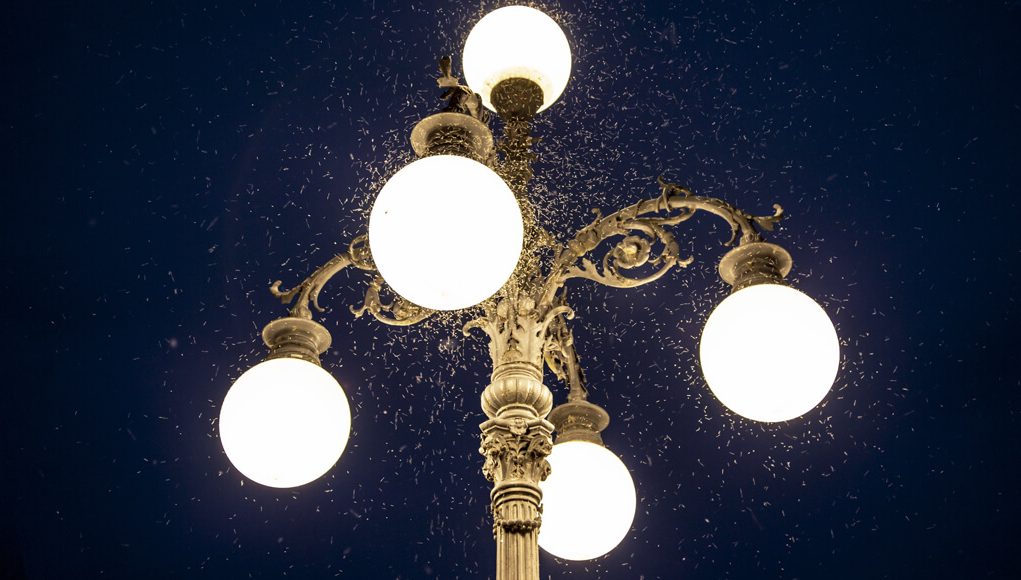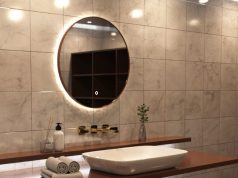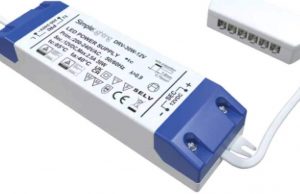Although hanging out on your porch on a breezy summer evening sounds fun and refreshing, having to deal with swarms of bugs circling around your outdoor lights is just plain awful! It’s like every minute there’s a bug crawling up your arm or falling on your shirt. You won’t even be able to relax because you keep swatting, shooing, or dodging. Instead of enjoying a cosy haven, it’s like you’re fighting on a battlefield!
So, how do you deal with this? How can you stop bugs from preventing you from enjoying your magnificent deck at night? By instinct, lights naturally captivated insects. However, many studies have claimed that LED lights are the least favourite Light source of these six-legged creatures. Also, it said that different spectrums of light have an extra level of attractiveness, and the least likely to entice a bug is a warm-coloured LED. Why, though? How are LEDs different, and why the warm colour? Well, before we go to the lights, let’s first try to understand the insects.
What makes LED bulbs attractive to bugs?
If you’re wondering why bugs love light, who doesn’t? Our ancestors did their best to make light as handy, compact, and versatile as possible for us. Plus, a well-illuminated space undeniably makes us happy and motivated. So, for insects, what does light do to them? Well, it’s not that easy to identify the reason because even scientists are still figuring out why. However, they did manage to conjure some theories in their research:
Insects use light for navigation.
Bugs use light as a compass for their movement. It’s believed that insects use natural light sources like the moon and the sun to guide them as they move. Remember how sailors used to rely on stars to help steer their ship to their destination? The same principle applies! So, when insects see a light source in your backyard, they move towards it. However, moths and flies are easily confused, so if they mistake your wall lamps for the moon, they end up circling around.
Insects use light to find food.
Another theory formulated is that bugs crowd on garden lights and campfires because they also know that other insects will be there. Some are predators looking for prey, and others are there to find a mate. Also, moths usually feed on a flower’s nectar which is known to reflect UV rays. Because some light bulbs also produce a low amount of UV light, hungry bugs mistake them for nectar.
Insects use light to flee/avoid predators.
For bugs at the bottom of the food chain, seeing a light source in the wild signals an escape from potential threats or enemies. With a light source present, they have a clearer view of the path they need to take and whether a predator is blocking it. Maybe the reason why bugs crash into your porch lights is because they’re trying to shake off their enemies!
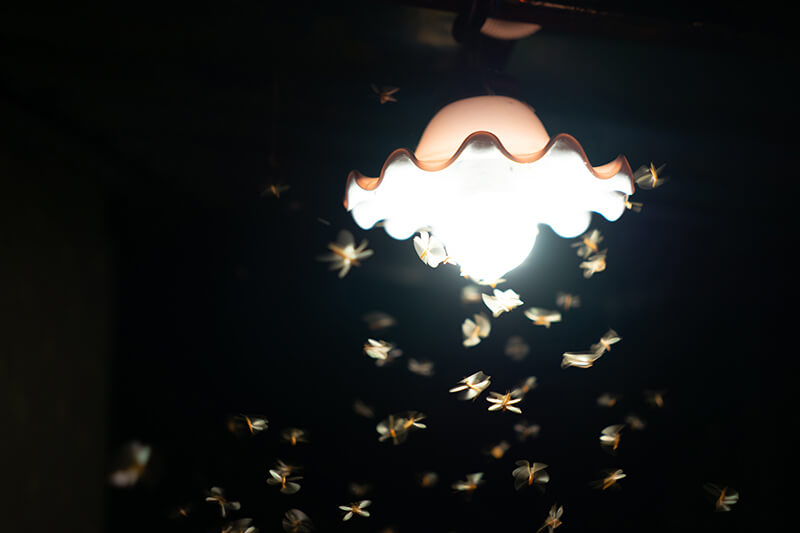
What are the types of light that bugs like?
Now that we know some of the possible reasons why lights attract bugs, we need to identify the characteristics of light that they like. As we said before, LEDs attract fewer bugs, but why?
Phototaxis is the phenomenon wherein light affects the behaviour of an insect. Some insects have positive phototaxis like moths which is why they’re attracted to light, while others have negative phototaxis, which is why they’re repelled by light, like cockroaches. If you think understanding phototaxis needs a degree in biology, think of it this way. Three factors make light attractive to an insect. If you reduce those captivating factors (phototaxis), then fewer bugs will crowd your outdoor lamps! So, what are the three elements?
Wavelength
Why do bug zappers have a light that appears purple or blue? If you’re a regular camper, you’ve probably bought this often, so why do you think it’s designed that way? Our eyes have three receptors (red, green, and blue) which enable us to see the colours of the rainbow. However, once we go outside that spectrum, we won’t be able to see it (like UV lights).
Like other kinds of animals, insects can perceive some colours well, particularly those cool, shortwave colours like blue and purple. Now you get why bug zappers are made using blue and purple! Alternatively, warmer colours like orange and yellow are less visible. Some of them can’t even see red!
Heat
If the colour is not the reason, then it must be the heat. Insects love to hang out in a warm environment, and because some of your light bulbs radiate heat, that may be the reason why they party in your place! For example, mosquitoes don’t fly around your lights because of the colour; it’s because of the heat it produces. So, if you want to lessen the number of visits by your local bugs, then use a lamp that emits less heat.
Filament-based lights like halogens and incandescent tend to produce more heat than fluorescents and LEDs. Yes, LED lights do emit heat, but compared to others, they give off incredibly little heat.
Brightness
If you already ruled out the colour and the heat of your bulbs, it’s probably the brightness. The brighter your bulb, the more insects will see it. That’s why it’s better to get outdoor lights that would supplement the necessary brightness you need but not more than that. This way, it will reduce the number of insects that would check in.
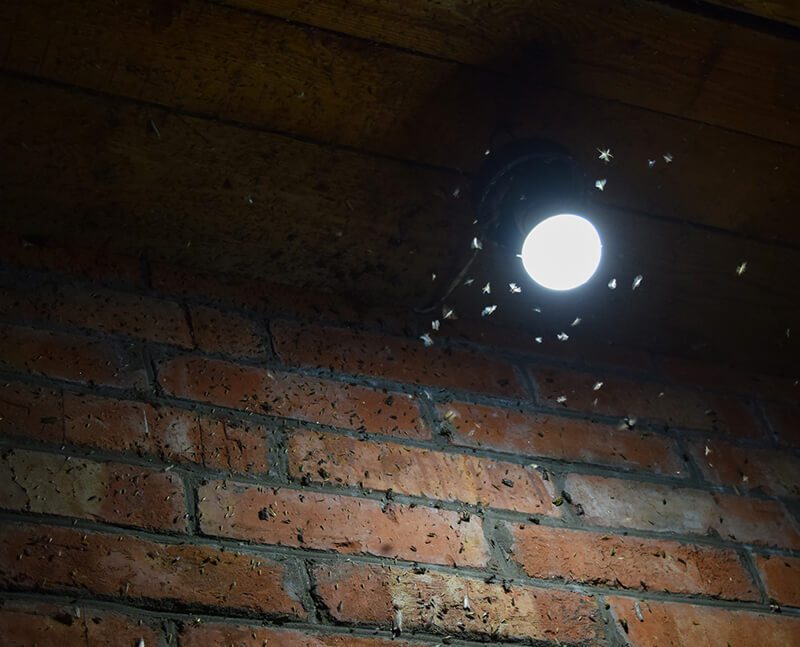
What kind of light do you need?
Let’s do a quick rundown!
- Insects like blue and purple lights but not orange and yellow.
- Insects like lights that emit heat.
- Insects like bright lights.
- Insects like UV lights the most.
So, with all that in mind, the best lights to repel bugs are LED lights in a warm colour temperature! However, that does not guarantee that you’ll never see a moth or a fly every time you switch on your outdoor lights. Similar to people, insects also have their own light preferences. So, what might work for a particular species may not work for another. You could try getting a bug light, but those have a strong yellow tone that may not look too appealing to have on a porch. So, although it cannot completely eliminate the bugs, your best solution for a nice-looking and cosy porch light is a warm-white LED light.
So, now that you know what you need, head on to our website, Simple Lighting, and check out our extensive range of warm white LED bulbs that are affordable, energy-efficient, and long-lasting!


